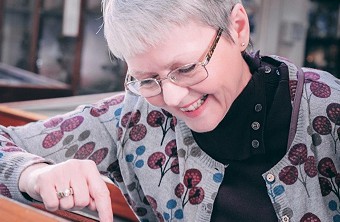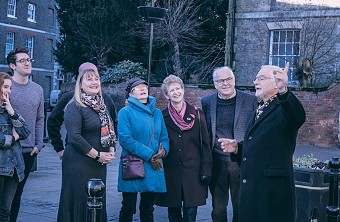
 Back to Blogs
Back to Blogs
17 August 2022
A view from The Chair
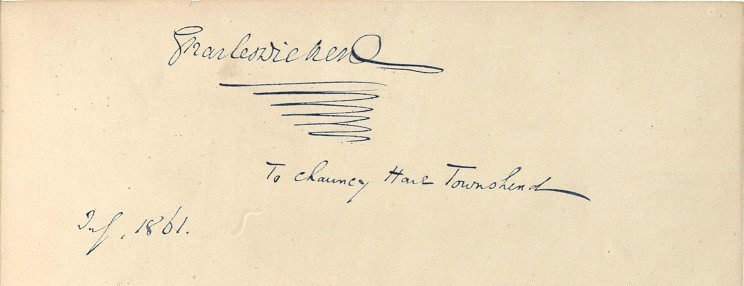
The first of an occasional series of blogs by Steve McGregor Chairman of the Board of the Museum.
Now is the time to set out a few thoughts about the Museum. After prolonged disruption caused by the pandemic and the need for extensive building works the Museum can finally look forward to the return of some form of reality.
As from the 27th of July the Museum is open to the public free of charge from Wednesday to Saturday each week. Bearing in mind that the premises were largely closed to visitors for long periods in 2020 and 2021 with limited opening returning only earlier this year the new normal hours bring with them a huge sense of relief and satisfaction. Why relief you might ask? Taking things in order – The poor condition of the building has long been recognised and it was added to the Buildings at Risk Register in November 2018. This followed the partial collapse of the ceiling in the Townshend Room in which fortunately there was no damage to persons or property. There then followed an extensive period of surveying, tendering, grant applications and the appointment of specialist contractors.
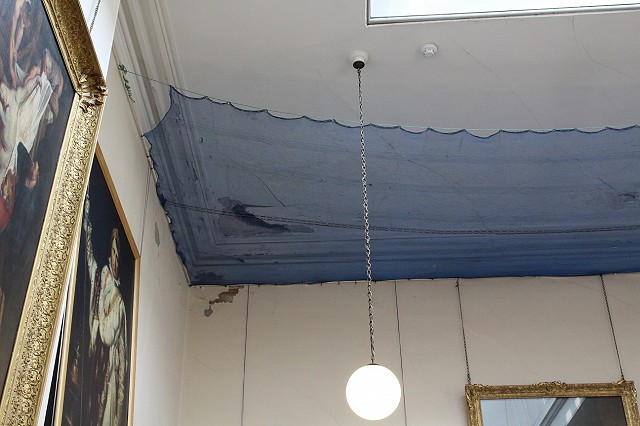
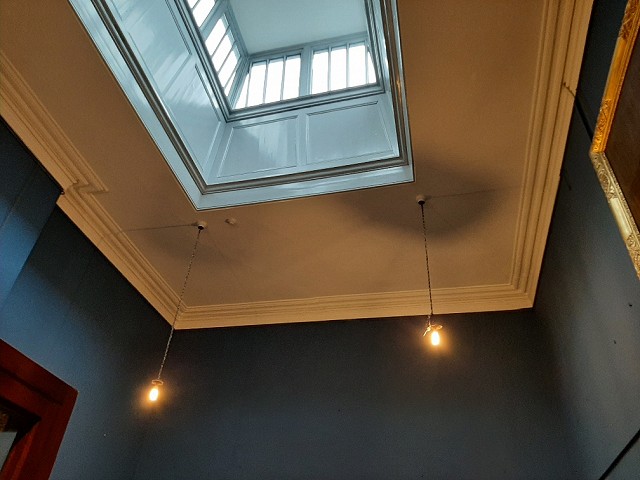
The 'Townshend Room', before and after repairs
Work eventually got under way and a new roof, rainwater goods, drains,masonry, woodwork and external walls and railings were all put in place. This major work has now been completed to a very high standard. Concurrently, a separate project was initiated to create a new rear entrance and courtyard incorporating a seating area, reception and shop. This work is expected to be completed shortly.
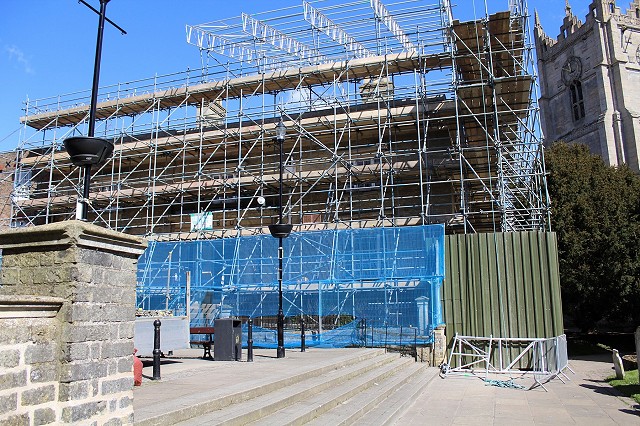
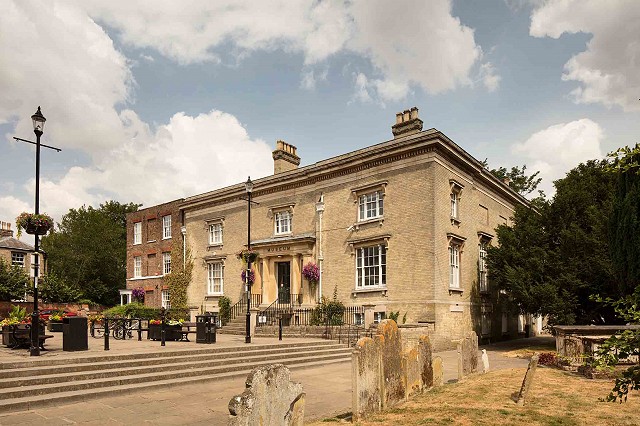
Scaffording to the front of the Museum during repairs
So, winding the clock back to 2017 when the problems arising from the condition of the building were manifest the relief is that thanks to the immense work of all involved in these projects the Museum has come through what has probably been its greatest upheaval in modern times. We are once again open.
The satisfaction comes from the sense of achievement. The fabric of the Museum has been saved. There was a real risk of closure and the dispersal of one of the most extraordinary collections of treasures and artefacts anywhere in a provincial town museum. Which other comparable museum can boast the original manuscript of Great Expectations by Charles Dickens? Or a dinner service taken from Napoleon at Waterloo? Or a chess set played with by Louis the 14th? Not to mention the priceless manuscripts including works by Byron and The Monk by Matthew Lewis. I almost forget Thomas Clarkson's chest which contains examples of 18th Century textiles, seeds and leather work. There is so much to see and enjoy in this treasure trove.
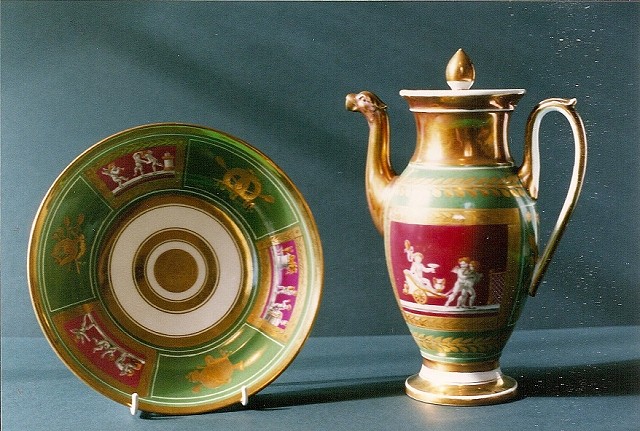
Part of 'Napoleon's Breakfast Service'
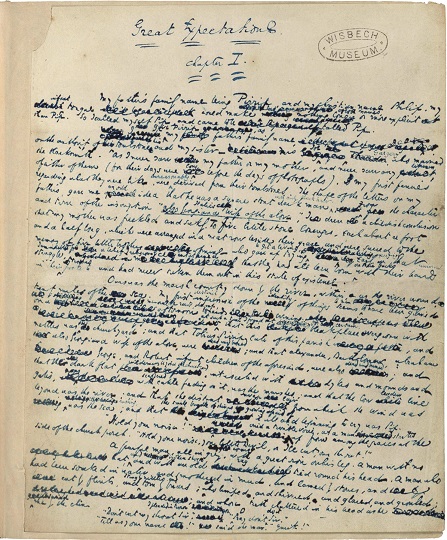
First page of the original manuscript of 'Great Expectations' by Charles Dickens
We now have to make the most of the work done by everybody to get us up and running again. This means greater engagement with the local community including schools and businesses, increasing our relevance in the age of screens which includes encouraging children especially to put their screens down and come and see at first hand what an albatross really looks like or the skeleton of a killer whale taken from the River Nene at Wisbech (yes that is true) or a bust of The Wisbech Idiot. Who was he? Answers invited to be addressed to the Chairman of the Museum please.
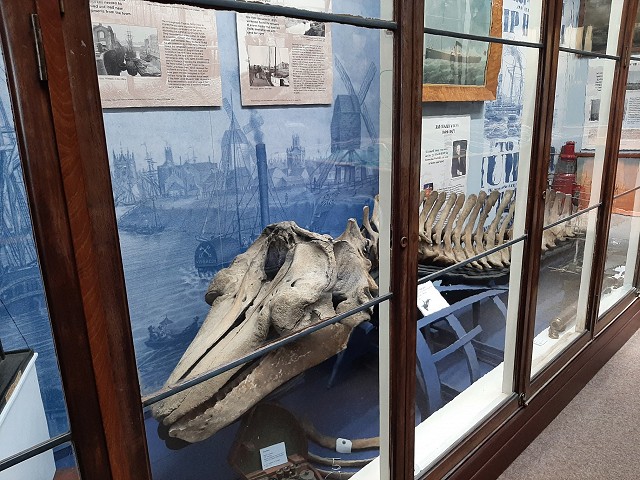
Skeleton of a Killer Whale caught in the River Nene
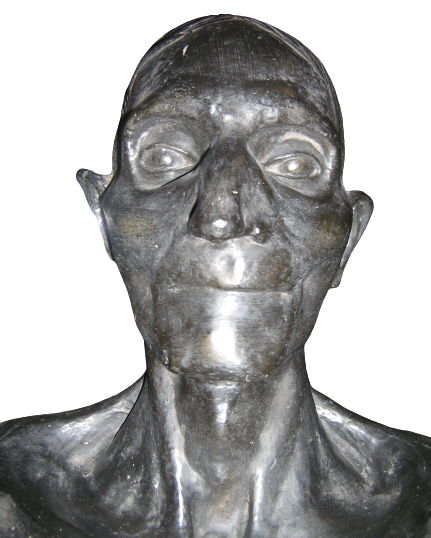 The Museum tells the history of Wisbech and the Fens from the heydays of the area in the 19th Century through to the relative decline of the 20th Century and continuing. Did you know that sea going ships were built at Walsoken for instance or that King's Lynn was once a whaling port? How about pleasure trips by sea to Hull? The drainage of the Fens is marked (as you would expect) as are the local industries based on agriculture, brewing and food processing as well as traditional metal bashing.
The Museum tells the history of Wisbech and the Fens from the heydays of the area in the 19th Century through to the relative decline of the 20th Century and continuing. Did you know that sea going ships were built at Walsoken for instance or that King's Lynn was once a whaling port? How about pleasure trips by sea to Hull? The drainage of the Fens is marked (as you would expect) as are the local industries based on agriculture, brewing and food processing as well as traditional metal bashing.
I am quite sure that a visit to the Museum will stimulate your interest in what you see. You will want to return and bring your family and friends. Who knows you might even wish to join our team of dedicated and skilled volunteers. In whatever capacity you come you will be most welcome. We do not charge for admission but we welcome donations which help us keep the doors open and pay the considerable overheads. We all look forward to meeting you and answering your innumerable questions. You will be amazed at what we can show you.
Right -The bust of 'The Wisbech Idiot'
Steve McGregor, Chairman of the Board of the Museum
Share this article
Most recent blog posts
 Recent Accessions: Paintings from the collection of Ashley Whitteridge
Recent Accessions: Paintings from the collection of Ashley Whitteridge
 A further view from the Chair.
A further view from the Chair.
 A Tribute to Bill Knowles of Walpole
A Tribute to Bill Knowles of Walpole
 Museum's Urnes Style Brooch recreated by Maria Holzleitner
Museum's Urnes Style Brooch recreated by Maria Holzleitner
 Reading Priscilla Peckover: Part 2. On Accessibility, Violence, and the Power of Saying “No”
Reading Priscilla Peckover: Part 2. On Accessibility, Violence, and the Power of Saying “No”
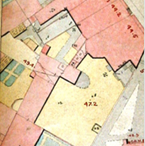
Supporting the museum
To maintain and grow our collections we need your contributions, please support us by donating today.





